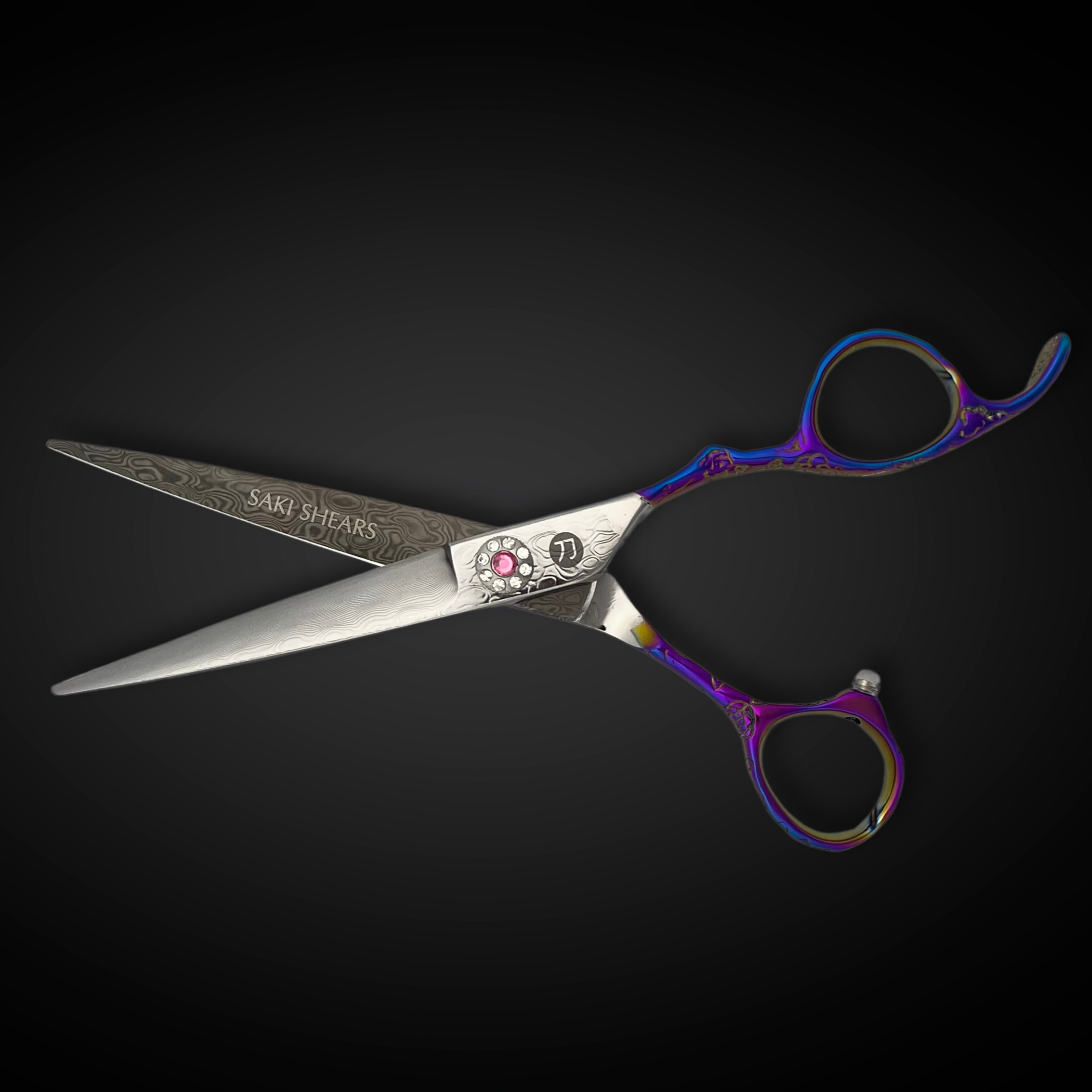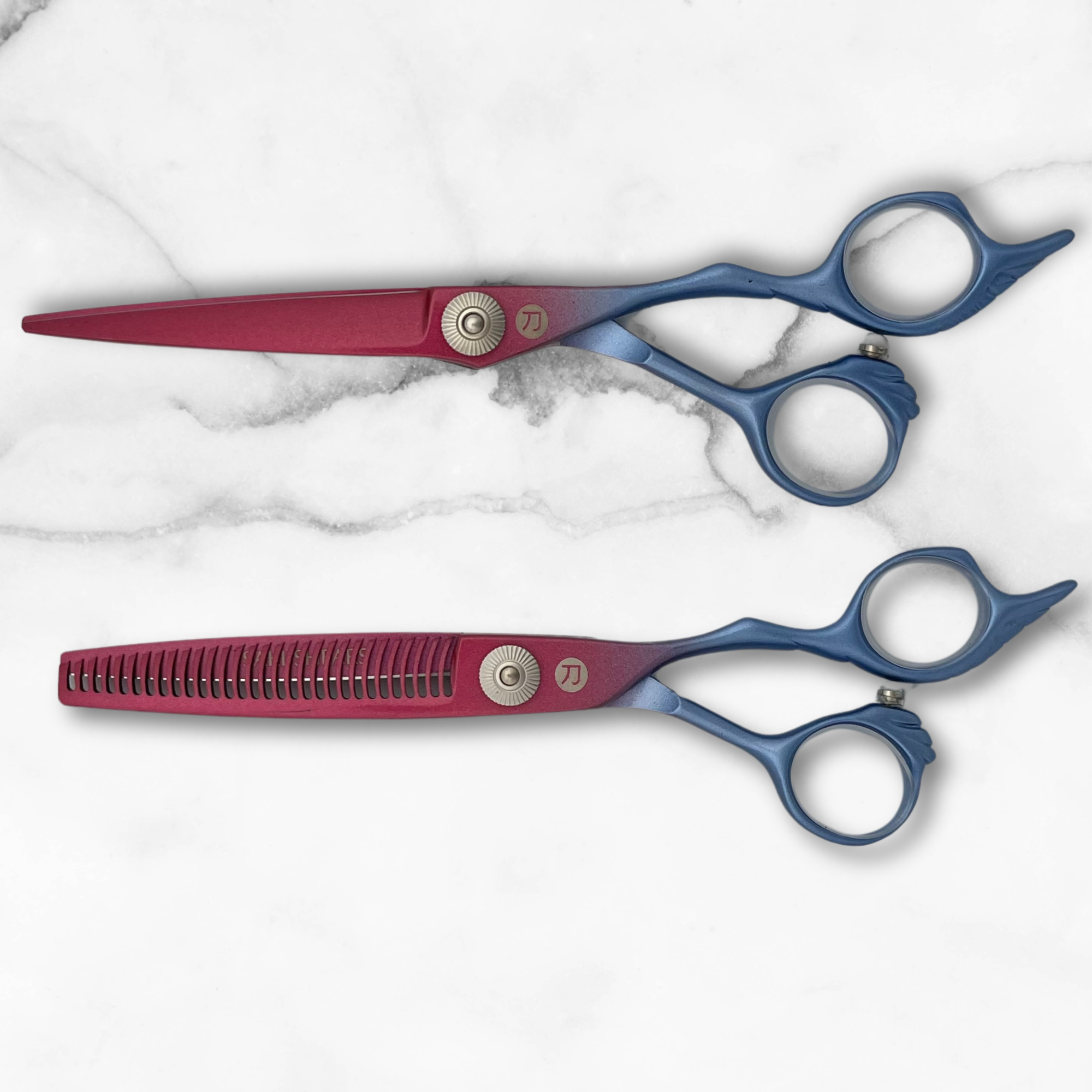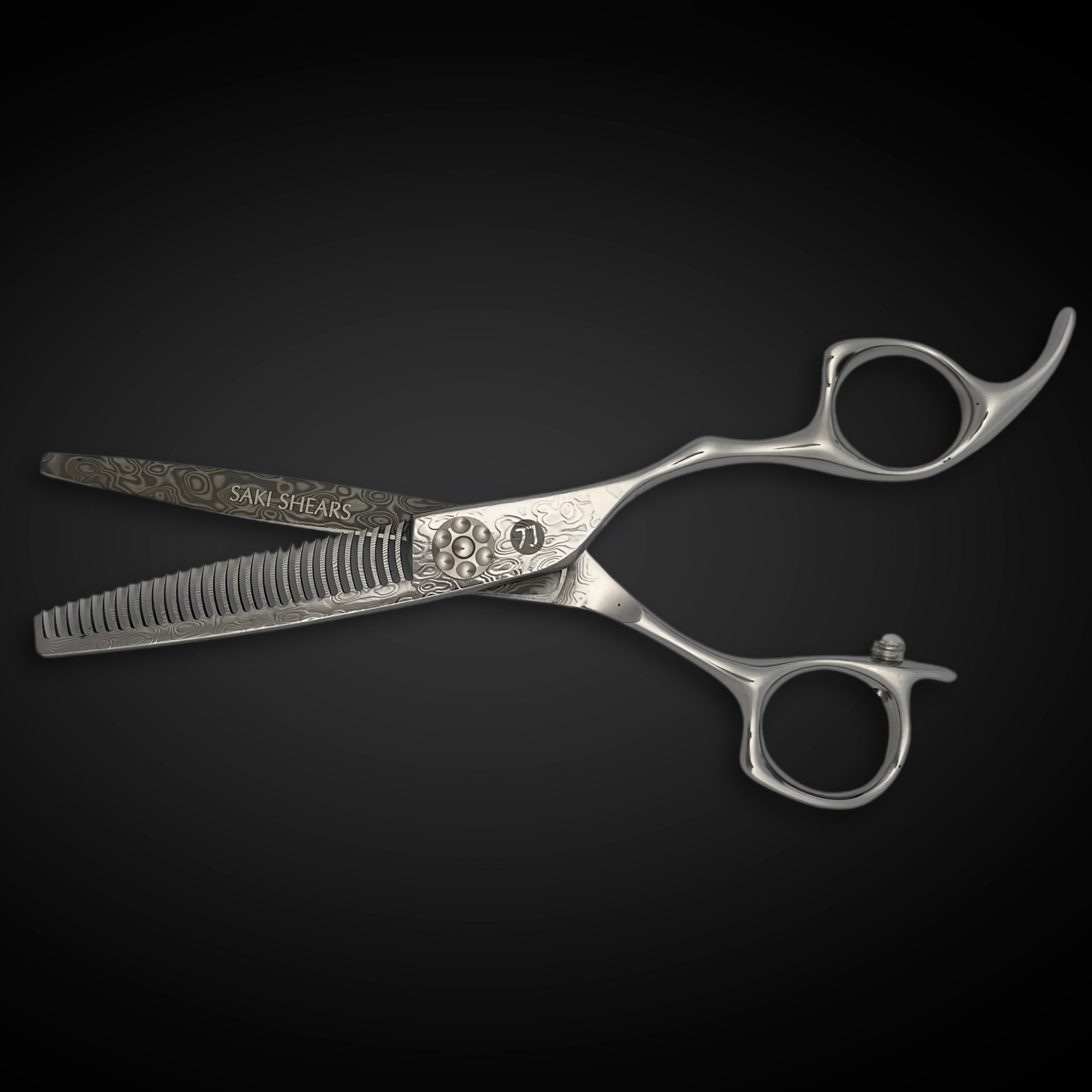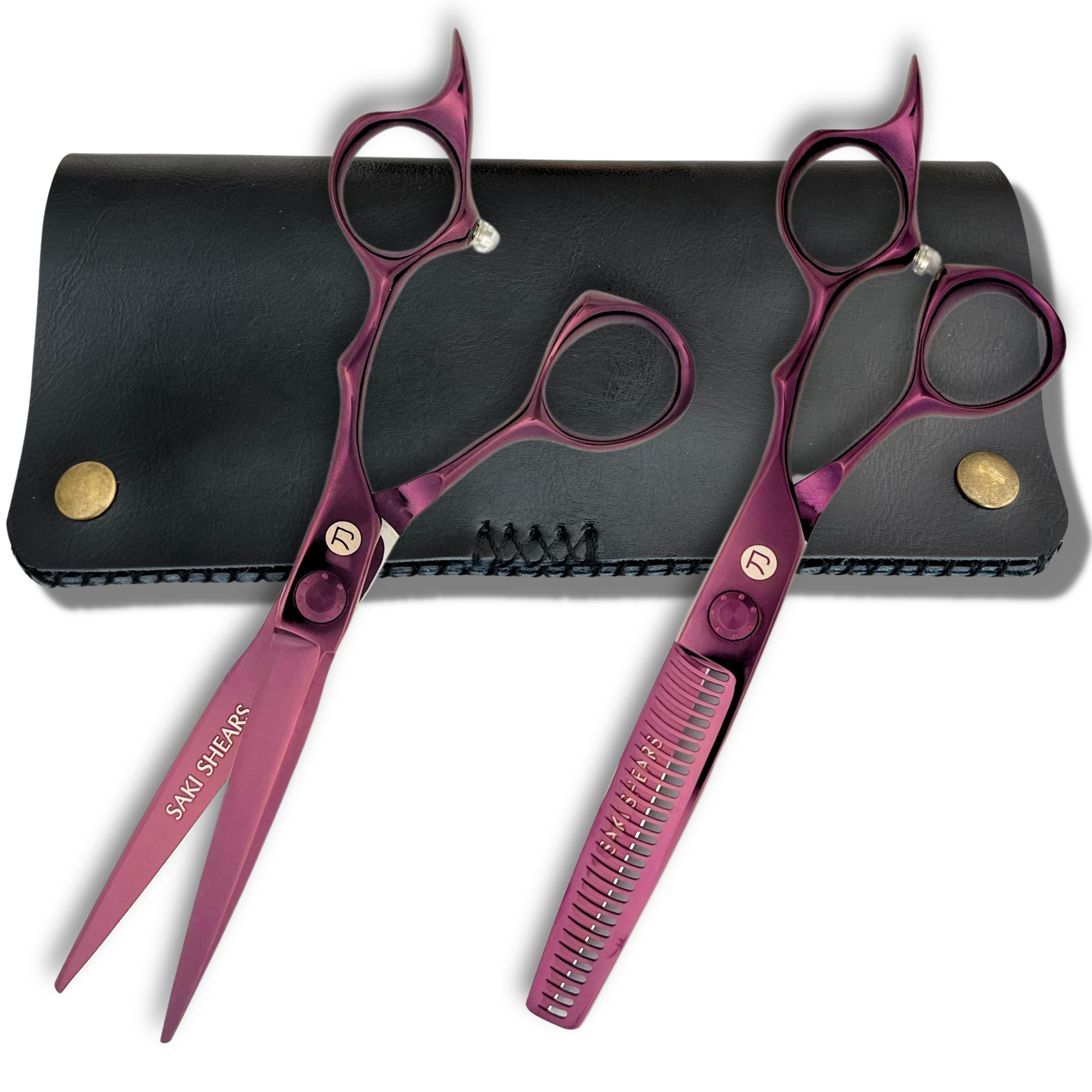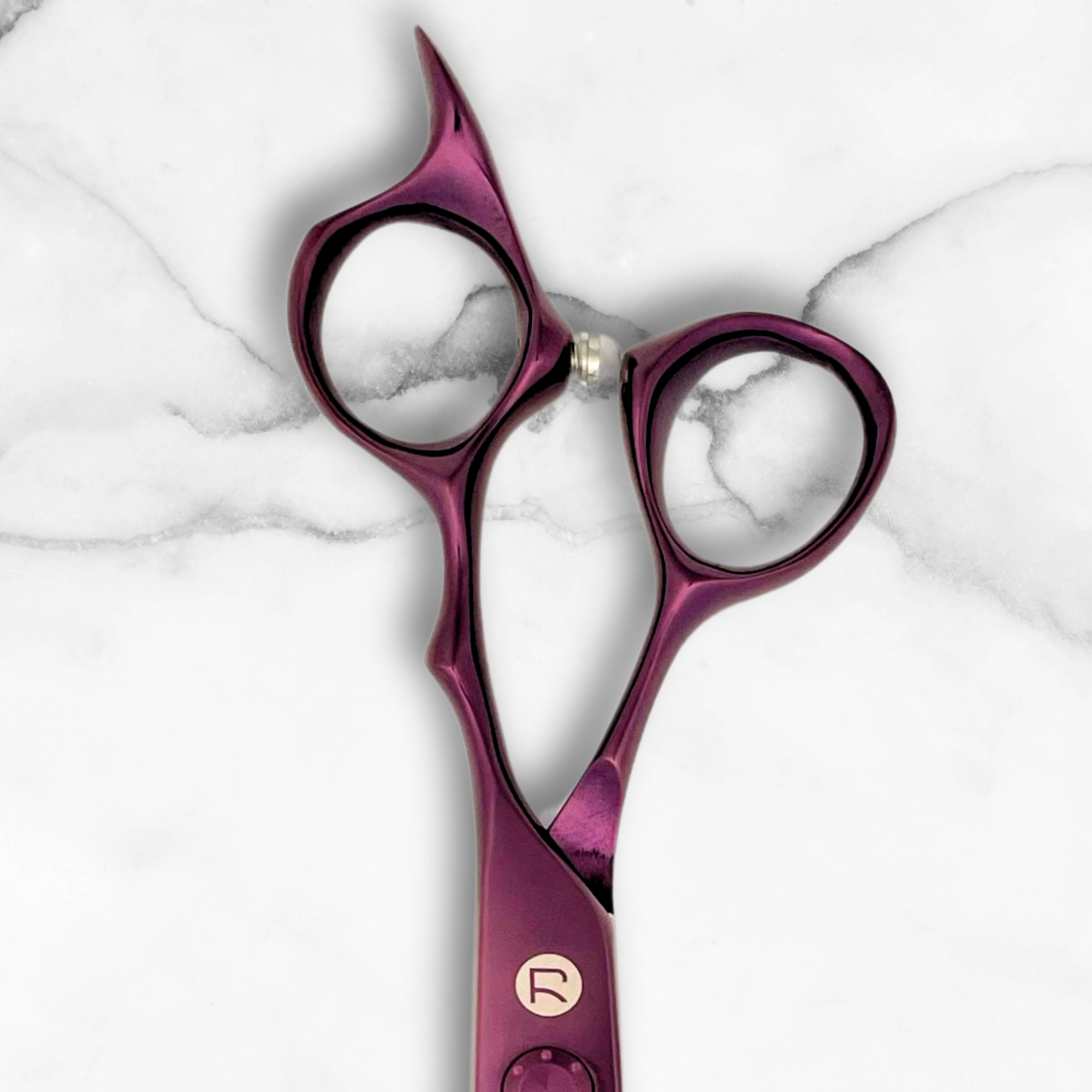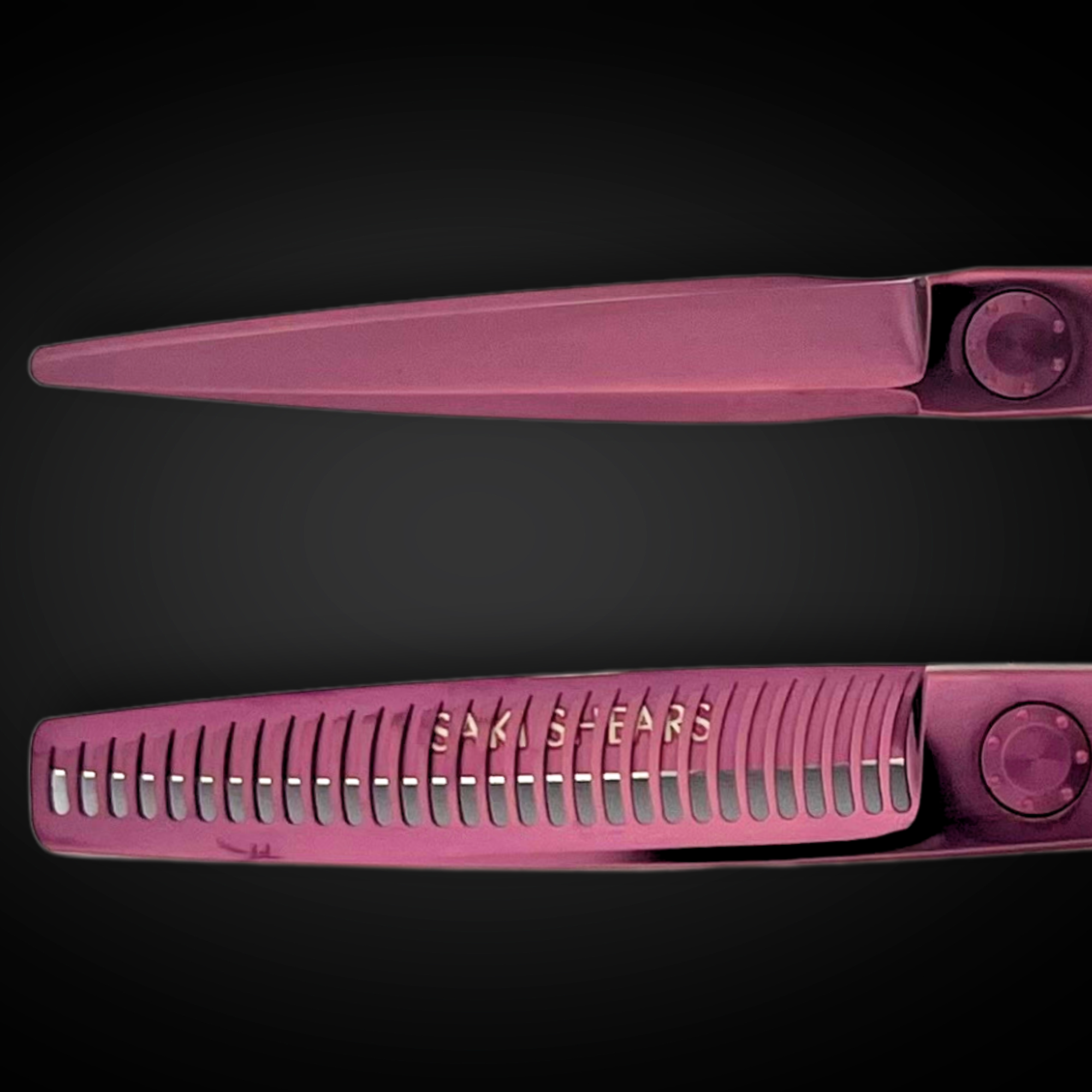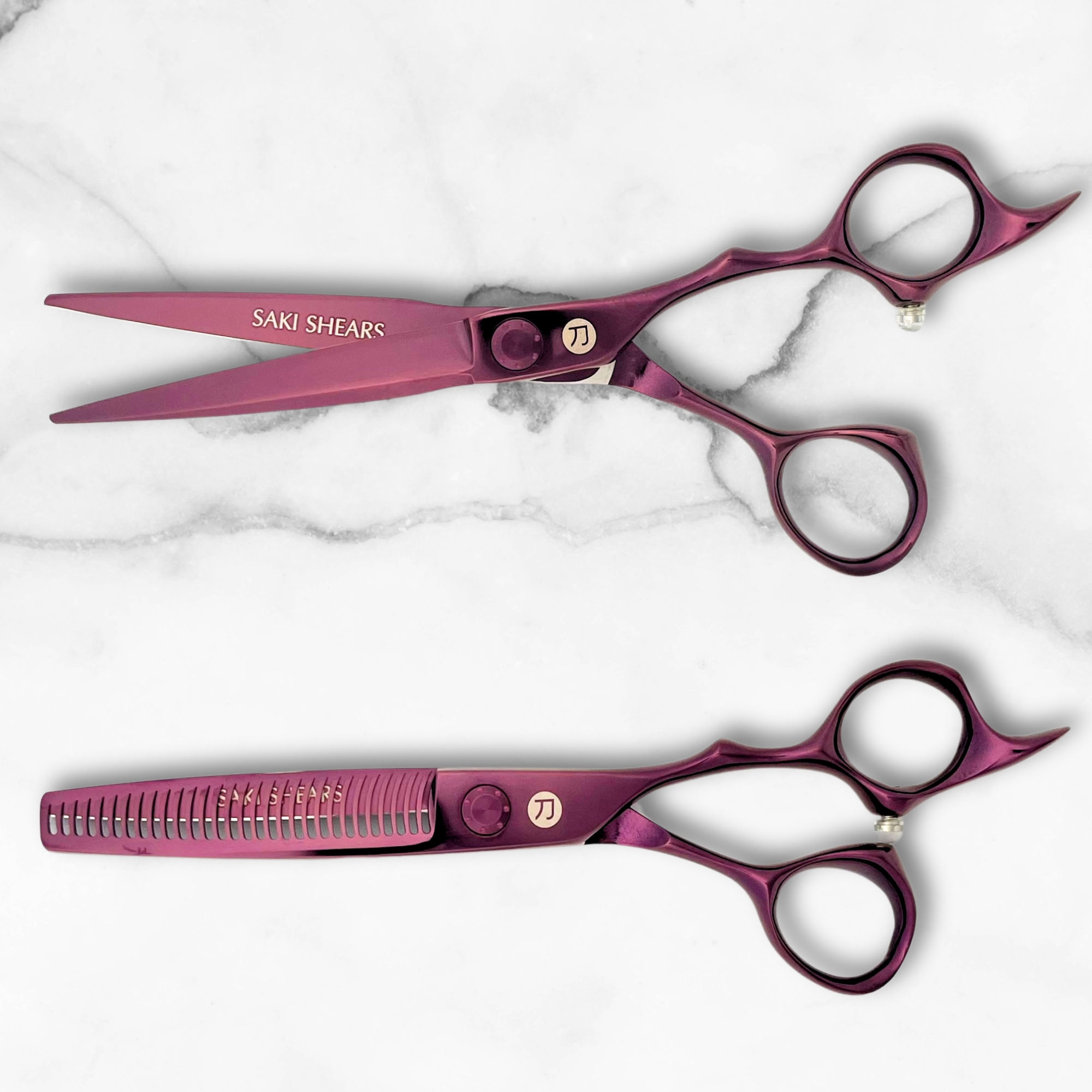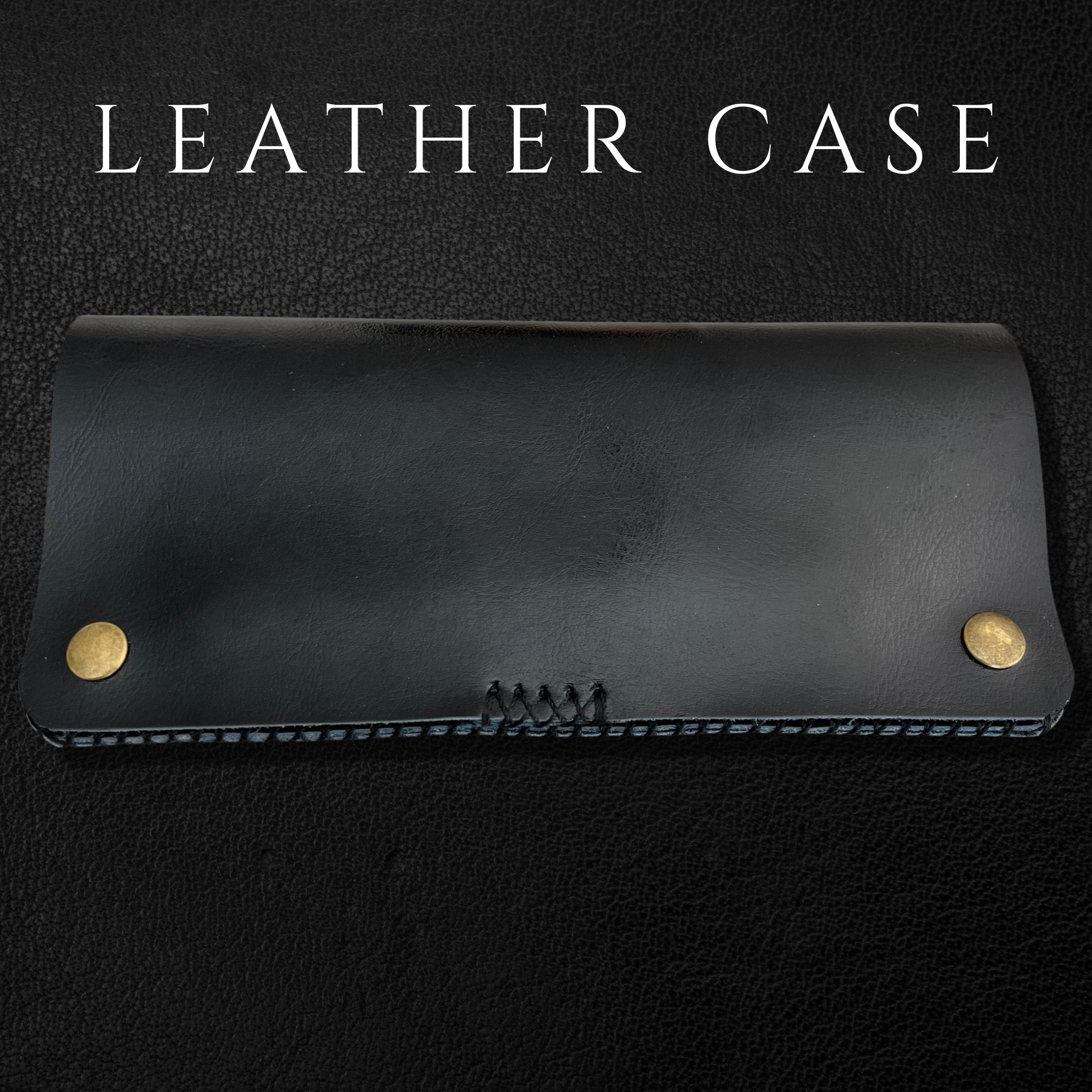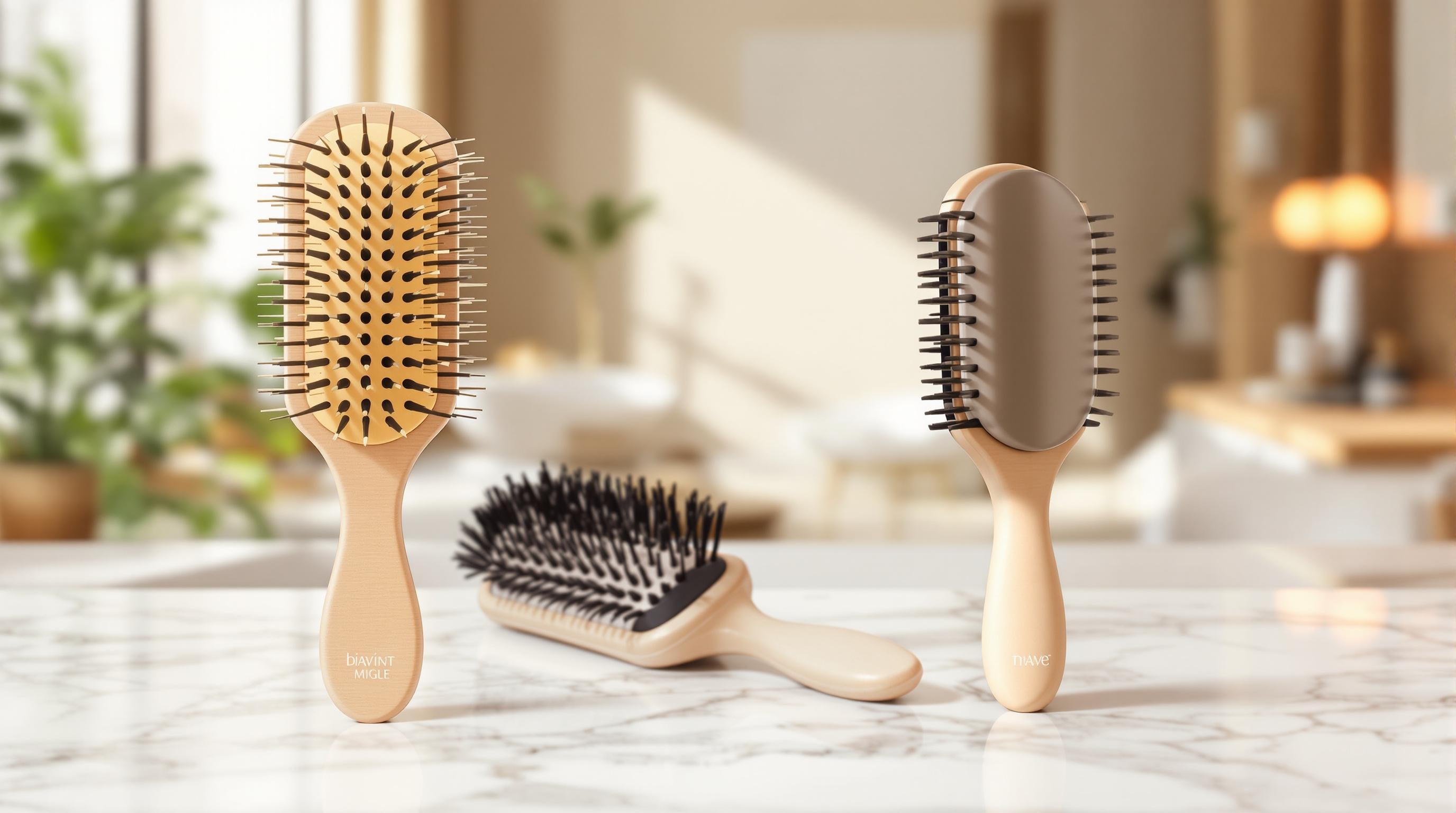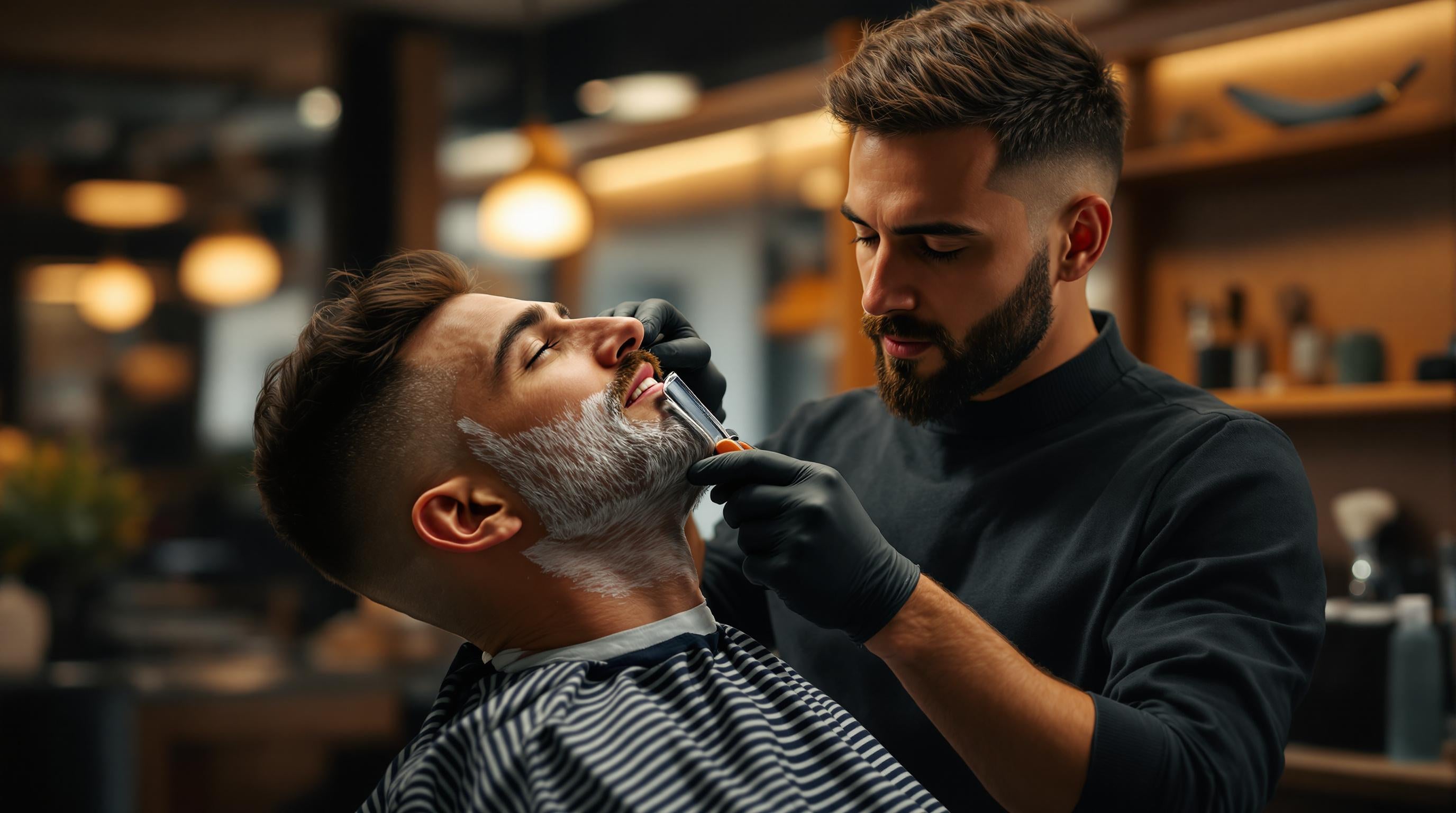Get Salon-Quality Hair at Home: Choosing the Right Brush for Your Styling Needs
Want salon-quality hair at home? Start with the right brush. The brush you use affects everything from detangling and distributing natural oils to creating sleek styles or bouncy volume. Here's a quick guide to help you choose:
- Round Brushes: For volume and curls. Smaller barrels for short hair, larger barrels for waves.
- Paddle Brushes: Best for smoothing and straight styles.
- Vented Brushes: Cuts drying time and minimizes heat damage.
- Bristles: Natural boar for shine, synthetic for durability, or a mix for versatility.
- Materials: Ceramic for heat styling, wood to reduce static, and tourmaline for frizz control.
Match your brush to your hair type:
- Fine Hair: Soft, natural bristles for gentle care.
- Thick Hair: Firm bristles for detangling.
- Curly Hair: Flexible bristles to maintain curls.
- Straight Hair: Mixed bristle paddle brushes for shine.
Clean your brushes regularly and pair them with the right products (e.g., heat protectant with ceramic brushes) for best results. The right brush isn’t just a tool - it’s the foundation for healthier, better-looking hair.
I Tested 17 Hair Brushes to Find the BEST for Healthy Hair
Types of Hair Brushes and Their Uses
Choosing the right hairbrush can make all the difference in achieving the look you want. Let’s break down the main types of brushes and how they work.
Round, Paddle, and Vented Brushes
Round brushes are perfect for adding volume and shaping curls. The barrel size matters: smaller barrels (0.75–1.5 inches) are great for short hair, while larger barrels (2–3 inches) are ideal for creating loose waves in longer hair. Paddle brushes, on the other hand, are your go-to for smoothing and evenly distributing natural oils, making them ideal for sleek, straight styles.
Vented brushes are designed with openings to improve airflow during blow-drying. This design helps cut down drying time and minimizes heat damage, making them a must-have for frequent styling sessions.
Now that we’ve covered brush shapes, let’s dive into how bristles and materials influence performance.
Bristle Types and Brush Materials
Natural boar bristles are excellent for spreading scalp oils through your hair, giving it a healthy, natural shine. They’re also gentle, making them a great choice for fine or damaged hair.
Synthetic bristles, often made from nylon or plastic, are durable and heat-resistant, making them perfect for detangling and heat styling. Many brushes combine both bristle types to offer the best of both worlds.
| Material | Key Benefit | Best Use |
|---|---|---|
| Ceramic | Even heat distribution | Heat styling for polished results |
| Wood | Reduces static | Everyday brushing |
| Tourmaline | Emits negative ions | Smoothing and frizz control |
| Metal | Quick heat conduction | Advanced styling techniques |
The material of the brush plays a major role in its performance. For example, ceramic-coated brushes help reduce frizz and static while blow-drying [2]. Tourmaline-infused brushes emit negative ions that smooth the hair cuticle, leaving it sleek and shiny. Wooden brushes are gentle on the scalp and naturally reduce static, making them ideal for daily use.
With these insights into brush materials and bristles, let’s move on to matching the right brush to your hair type.
Choosing Brushes for Different Hair Types and Styles
Brushes for Fine, Thick, Curly, and Straight Hair
When it comes to fine hair, gentle care is key to avoid breakage. A brush with soft, natural bristles works best. A hybrid boar/nylon brush is a great choice - it combines soft boar bristles for smoothing with nylon pins for detangling. For styling, a small or medium round brush adds volume without overpowering delicate strands.
For thick hair, you’ll need something more durable. Brushes with firm bristles can handle dense layers effectively. A large paddle brush with sturdy nylon bristles is perfect for everyday use and detangling.
Curly hair requires a brush that preserves its natural shape. The Wet Brush Original Detangler is a standout option. Its flexible bristles glide through tangles while keeping curls intact.
For straight hair, a paddle brush is your go-to tool for sleek, polished looks. Choose one with a mix of boar and nylon bristles to evenly distribute oils and maintain tension during styling.
| Hair Type | Key Brush Features | Ideal Use |
|---|---|---|
| Fine | Soft, natural bristles | Gentle detangling and styling |
| Thick | Firm, widely-spaced bristles | Smoothing and detangling |
| Curly | Flexible, spaced bristles | Preserving curl definition |
| Straight | Mixed bristle paddle brush | Smoothing and adding shine |
Brushes for Specific Hair Concerns
If you have a sensitive scalp, ball-tipped bristles can provide extra comfort. For tackling frizz, tourmaline brushes are a game changer - they help seal the cuticle, reducing frizz and adding shine.
Combination hair, often a result of chemical treatments, benefits from dual-bristle brushes. These brushes combine boar bristles to distribute natural oils with nylon bristles to detangle ends effectively.
For salon-like volume, round brushes with ceramic barrels are ideal. They lift roots effortlessly, giving your hair that professional, full-bodied look.
Brushes for Popular Styling Techniques
Brushes for Blow-Drying and Volume
Ceramic and vented brushes are ideal for blow-drying because they enhance airflow and distribute heat evenly, giving you better control while styling. The size of the barrel plays a big role in the final look: 2-3" barrels are great for creating loose waves, while 1-1.5" barrels work best for tighter curls and more defined styles.
Vented brushes with open designs are especially helpful for thick hair, as they speed up drying by allowing more airflow. Celebrity hairstylist Jen Atkin emphasizes that choosing the right barrel size is key to achieving the volume and bounce you want in a blowout.
Brushes for Straightening and Smoothing
For sleek, straight styles, brushes with boar and nylon bristles are highly effective. Paddle brushes, in particular, provide the right amount of tension needed for smoothing hair while blow-drying. Technique is everything here - work in sections and aim the dryer nozzle downward to help seal the cuticle and reduce frizz.
Brushes for Detangling and Daily Use
Detangling brushes with flexible bristles are designed to move with your hair, reducing breakage and minimizing damage. To detangle effectively, always start at the ends and work your way up.
Professional stylists often use several brushes during a single styling session. They might begin with a detangling brush, move to a brush for rough drying, and finish with one designed for smoothing. Each brush serves a specific purpose, helping to create a polished, salon-quality finish.
Tips for Hair Brush Care and Use
Cleaning and Maintaining Brushes
Taking care of your brushes is just as important as using the right ones. Dirty brushes can spread oil and leftover product, making your styling efforts less effective.
Make it a habit to clean your brushes every 2-3 weeks. For plastic brushes, soak them in water mixed with a bit of shampoo. Wooden brushes should be wiped down with a damp cloth, while natural bristles can be spot-cleaned. Having 2-3 brushes to rotate between can also help them last longer.
"Regular cleaning of your hairbrushes is not just about hygiene - it's about maintaining the integrity of your hair care routine. A clean brush is more effective at styling and less likely to redeposit old product back into your freshly washed hair." - Jen Atkin, Celebrity Hairstylist and Founder of OUAI Haircare
Brushing Techniques for Different Hair Types
Keeping your brushes clean is only half the battle - how you use them matters too. Different hair types need different brushing techniques:
| Hair Type | Technique | Quick Tip |
|---|---|---|
| Fine | Gentle strokes | Start at the ends |
| Thick | Brush in sections | Move root to tip |
| Curly | Detangle when wet | Work from ends up |
| Straight | Use long strokes | Try boar bristles |
Using Brushes with Styling Products
The right combination of brush and product can elevate your styling game. Here are some pairings to try:
- Heat protectant works well with round brushes for blowouts.
- Volumizing mousse pairs with vented brushes for added lift.
- Smoothing serums glide beautifully with paddle brushes.
- Leave-in conditioner is perfect for detangling brushes.
For an extra touch of shine, celebrity stylist Jen Atkin suggests applying a lightweight oil directly to the bristles of your brush before styling. It’s a simple trick for smoother, shinier results.
Solving Common Hair Brushing Problems
Dealing with Static and Flyaways
Static electricity can quickly ruin your hair's look. One effective solution is using brushes with ionic technology, which helps seal the hair cuticle and can reduce frizz significantly - by as much as 48%.
For quick fixes to manage static:
- Use a humidifier in dry spaces to add moisture to the air.
- Opt for natural boar bristle brushes, which are gentler on hair.
- Apply lightweight styling products before brushing to keep flyaways in check.
Once static is under control, it’s worth looking at how the right brush can protect your hair in the long run.
Preventing Hair Damage
To minimize damage, choose brushes made with heat-resistant materials and flexible bristles. These features help avoid unnecessary stress on your hair. Brushes with ultra-soft bristles, for example, can reduce breakage by 45% compared to regular brushes. Ceramic barrels are also a great choice for styling, as they ensure heat is distributed evenly, preventing hot spots.
Adjusting Brushes for Hair Length Changes
As your hair grows or your style preferences change, it’s important to update your brush collection. Here’s a quick guide to help you choose the right brush for your hair length:
| Length | Brush Choice | Styling Benefit |
|---|---|---|
| Short (above chin) | Small paddle brush | Adds root lift and allows for precise styling |
| Medium (chin to shoulder) | Medium round brush | Offers versatility and helps create volume |
| Long (below shoulder) | Large paddle brush | Ensures smooth, even distribution and better control |
For a versatile option, the T3 Micro Volume 2.5" Round Brush is a great pick. Its mix of nylon and boar bristles works well on different hair textures and lengths.
Conclusion: Choosing the Right Brush for Salon-Quality Results
Your styling tools should grow with your hair goals. Celebrity hairstylist Jen Atkin puts it perfectly:
"Selecting the right hairbrush is as important as choosing the right shampoo or styling product. It's the foundation of great hair care" [2]
This underscores how much your brush choice can influence your results. But it’s not just about styling - your brush also plays a role in maintaining hair health. Trichologist Anabel Kingsley explains:
"Regular brushing with the right tool can help distribute natural oils from the scalp to the mid-lengths and ends, improving overall hair condition and appearance over time."
To match your hair's needs, consider these four essential brushes:
- Flexible bristle brush: Ideal for gentle detangling.
- Ceramic round brush: Perfect for adding volume.
- Paddle brush with ionic bristles: Great for everyday maintenance.
- Boar bristle brush: Helps spread natural oils for healthier-looking hair.
FAQs
What type of brush works best for blowouts?
Round brushes with ceramic or tourmaline barrels are ideal for blowouts. Smaller barrels (around 1"-1.5") give you tighter curls, while larger ones (2"-3") create loose waves. The barrel size helps you control the final look, whether you’re aiming for bouncy curls or a sleek, straight finish.
Which brush is ideal for everyday hair styling?
For everyday styling, boar bristle brushes are great for boosting shine, while flexible paddle brushes are perfect for detangling wet or dry hair. If you have fine to medium hair, the Mason Pearson Boar Bristle Brush is a standout option. It not only adds natural shine and volume but also conditions your hair as you brush [1].
What’s the most effective type of brush?
The right brush depends on your hair type and the style you want. Mixed bristle brushes, which combine nylon and boar bristles, are a versatile choice. They detangle effectively, reduce static, and add shine, making them suitable for a variety of styling needs.
| Hair Type | Best Brush | Benefit |
|---|---|---|
| Fine Hair | Boar Bristle | Gentle on hair, enhances shine |
| Thick Hair | Mixed Bristle | Great for detangling, less static |
| Curly Hair | Wide-Tooth Detangler | Maintains curls, avoids breakage |
With these brush options in mind, you can create a customized toolkit to make your at-home styling routine easier and more effective.

